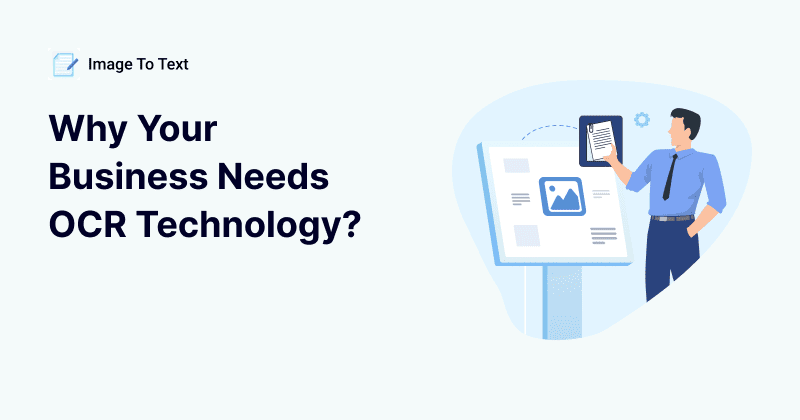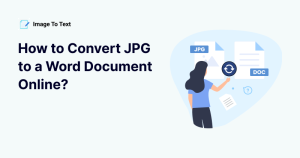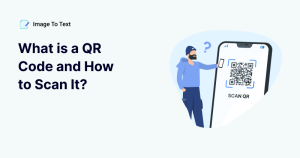Why Your Business Needs OCR Technology
If you look around these days, you will notice that a significant number of aspects of our lives have gone digital. Especially, if you look at a modern business firm, you will see that most of their database is computerized.
But this doesn’t mean that all traditional sources or documents have been discarded. You will still find important physical documents lying around. This means that in some firms, there may even be large amounts of hard copies.
This is a problem. However, we have the perfect solution that is the integration of OCR. This state-of-the-art technology will solve all your digitization challenges by providing a smooth passage into the digitized world. We will go into depth about this technology to help you learn all about it.
Introduction to OCR
Before talking about how to implement this technology or why there is a need for this, let’s understand what it actually is. OCR, as some of you may know, is a character recognition technology. It scans the text characters in certain file formats and extracts them.
These file formats can include images, PDF files, unalterable documents, and more. In other words, if there is an image in which a certain text is embedded, OCR can retrieve that text and let you manipulate it as you wish.
For example, take a look at this image:

Now, try to copy this text. Yes, you can’t do that. However, we inserted this into an OCR-powered utility and got the following result:
Chapter 4B
Stop Reading After “Functional Strategy”
You can easily copy the text in this form. You can even try to be sure. This is the concept of machine-readable text. The one you can copy is basically machine-readable, while the other is just interpreted as an image by machines.
So, one can say that OCR tools convert images/PDFs into machine-readable text.
General Benefits of OCR
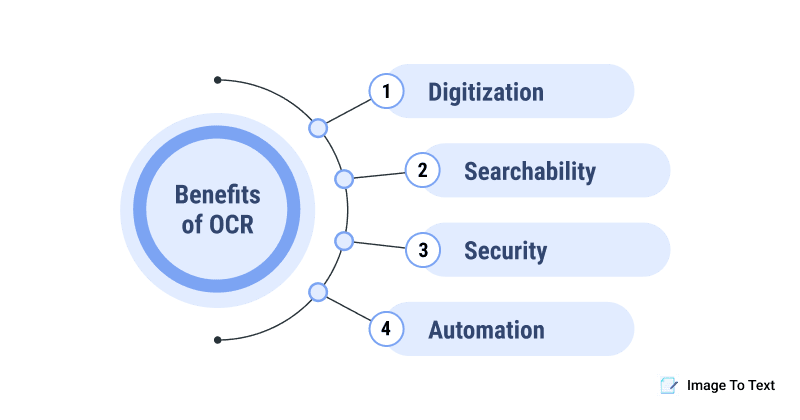
First, let’s have an overview of the advantages that you can enjoy with OCR integration. Then, we will get into industry-specific use cases.
1. Digitization
The basic benefit of OCR is its ability to convert documents into a digital format. This means that if your directory consists of a large number of physical documents, you can digitize them. The other benefits of this technology are interlinked with this. The coming sections talk more about how digitization is beneficial.
2. Searchability
With OCR digitization, you can search for your documents much more swiftly. To understand this, imagine a storeroom full of papers. Now, think how much time it will take you if you want one specific document from there.
In contrast, if your documents are saved in a digital format, you can simply search for your desired file with a few clicks. This is much faster and saves a lot of time.
3. Security
Digital databases are also much more reliable in terms of security. Imagine the same storeroom as before. In order to steal information from here, all one needs is to break the lock. Even if you have high-end security systems such as cameras installed, it will take up a lot of resources to catch someone who tried to breach data.
However, if you have computerized documents, you can integrate a number of protection systems. For instance, you can use password security or save documents in highly protected cloud-based platforms. This is also much cheaper than protecting physical directories.
4. Automation
Automation is another great benefit that OCR provides you. A number of automating processes can be integrated if your files are digitized. This includes data entry, data analysis, information extraction, file sharing, and much more.
Industry-Specific Applications
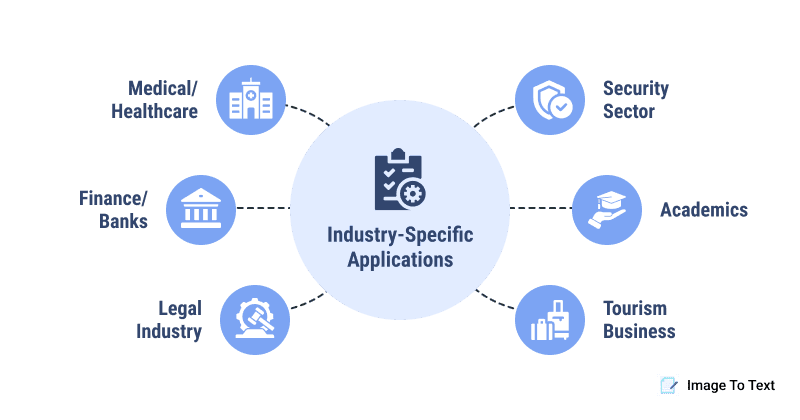
In the following, we will talk about different businesses and how they can utilize OCR technology. This will help you understand the importance of OCR in specific workplaces. If you find your own industry in the following, you can apply the technology as we explain. But even if you don’t, you can get an idea of how it may be implemented.
1. Medical/Healthcare Businesses
Going to a hospital is an unpleasant experience, at the very least. But if we look at it from the business point of view, OCR can be greatly helpful here. If patient records, prescriptions, test results, etc., are saved digitally, the chances of misplacing or losing them become very slim.
In this way, emergency cases can be handled quite well. You can provide patients and their families with smooth operations instead of slowing down things and risking someone’s life.
2. Finance/Banks
One of the most document-dependent or data-intensive industries out there is the financing industry. They can be much more efficient with OCR-enabled digital databases. Also, digitization is not where it stops for this industry.
Certain OCR software can also allow you to process invoices, receipts, and statements in an automated manner. In other words, they automatically extract data from user profiles and create the required documents.
3. Legal Industry
Have you seen the Netflix special, ’Suits?’ Even if you haven’t, legal firms usually have to handle a lot of paperwork. But did you know that more than half of law firms globally increased their IT spending in 2022 for digitization?
This shows that law firms' productivity can skyrocket if they convert their paperwork into digital work. Even though top firms might still not be implementing digitization due to various challenges, such as enormous databases, modern firms are vigorously utilizing digital files.
4. Academics
OCR has applications in the educational sector for both students and teachers. Both are explained in the following:
- Teachers: Since the current generation of students prefers digital handouts and academic material, teachers can convert their books into digitized PDFs. Moreover, advanced OCR can help them check tests automatically. For example, bubble sheets or multiple-choice questions can be checked automatically with OCR tools.
- Students: Students can digitize their handwritten notes with the help of OCR. Why not make them digital in the first place, though? Well, that’s because most of the students might not be as capable of making class notes as swiftly using digital devices as we are with pen and paper. However, converting them later on can provide great benefits.
5. Security Sector
Security-related sectors, such as Police, can use OCR to improve their functions. Let’s introduce a use case to help you understand. Imagine that a speed-checking camera takes images of cars that go over the speed limit. This image clearly shows the number plate of the car.
Traditionally, the subsequent process would be that a person manually inputs this number into a system to get information about the driver and then track them. However, if you have OCR-backed software, it will automatically read the number and feed it into the system. In this way, a challan ticket will be created automatically.
This makes processes much faster and cuts down the required workforce significantly.
6. Tourism Business
OCR can be implemented in tourism as well. This might be a bit confusing, so let us paint a case scenario. Imagine you take a group of people into a country that has its own language. This will pose many challenges. For example, you won’t be able to read menus, traffic signs, posters, and more.
Learning a whole new language for this purpose isn’t a smart move. Instead, you can use OCR tools. How so? Well, you can insert images of the signs or menus that you don’t understand and then insert the extracted text in a translating platform. In this way, you will be able to survive in any foreign country, even with the language barrier.
How to Use OCR?
Now, let’s see how an OCR tool functions. Here is a simplified breakdown of all the steps you go through to use a typical online OCR tool.
1. First, go to an online OCR tool. An example is imagetotext.info. It should look like this: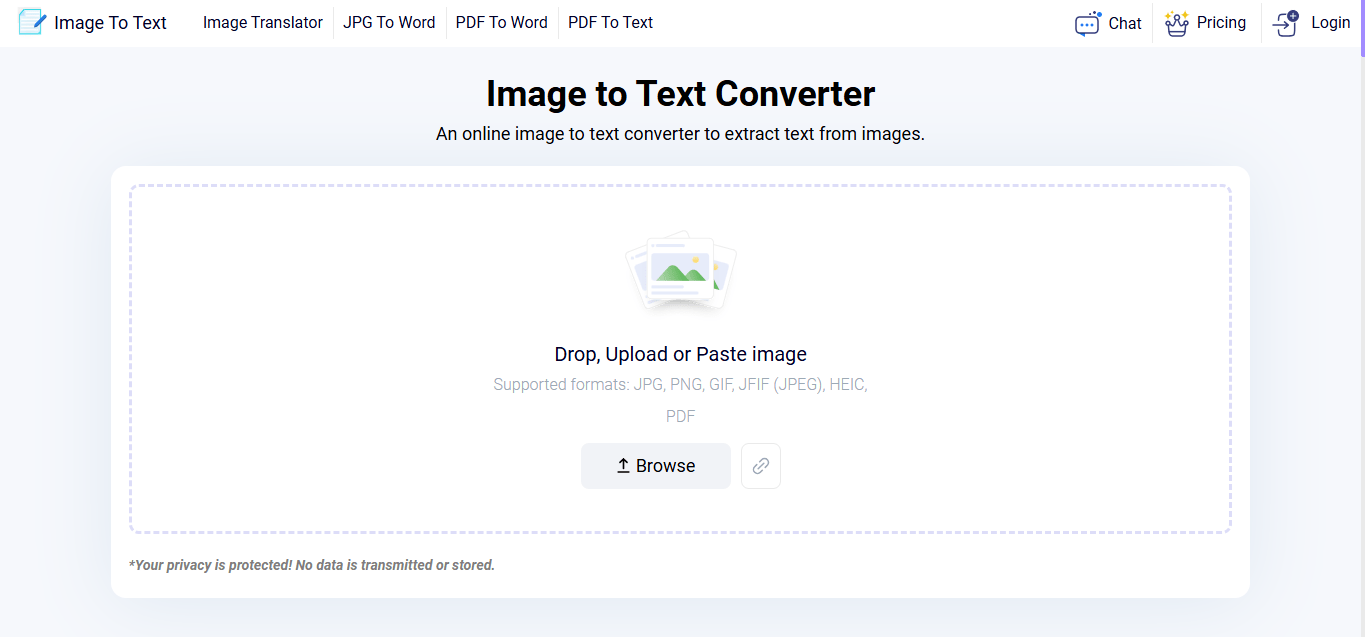
2. Then, upload an image that has a piece of text you wish to select, copy, or edit.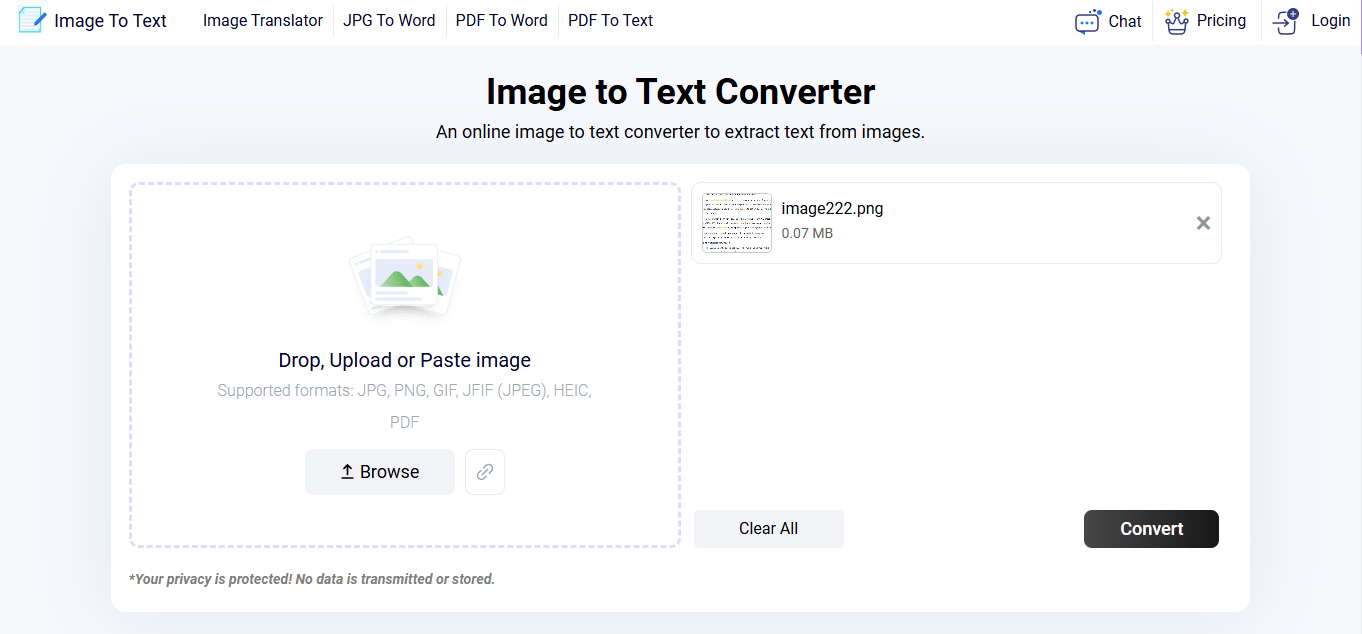
3. Once the image is uploaded, click on the ‘Convert’ button given at the bottom.
4. After this, the tool will show you the extracted piece of text. You can use this machine-readable text as you want. You can download it as a Word file as well. 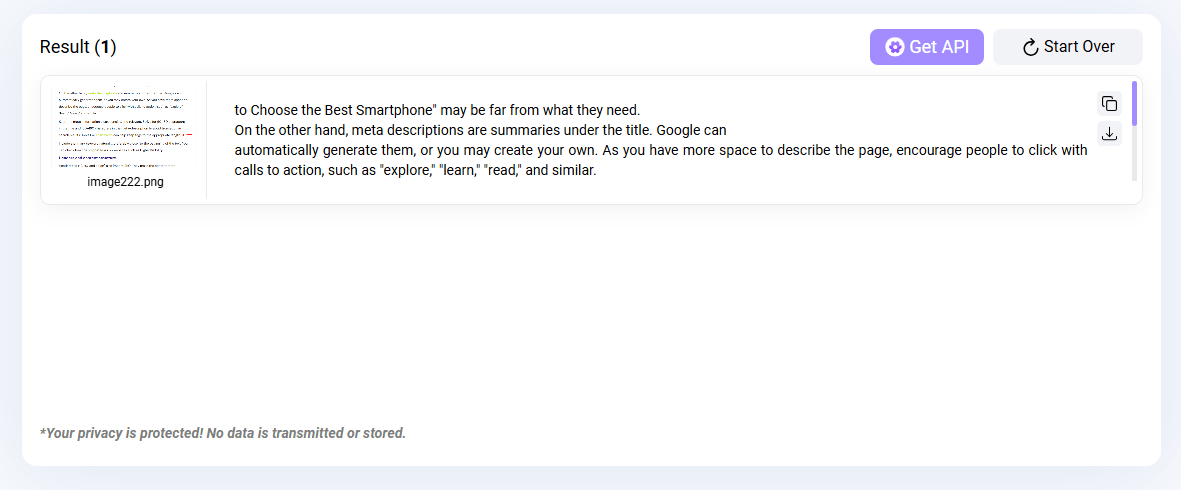
As you can see, the process is pretty simple. You can use the tool even if you haven’t come across one of such nature before. However, things aren’t as simple as they seem. The above-mentioned tool is a simple utility that can be used for certain daily tasks. But if you need high-tech software that provides long-term benefits, then you might face some challenges.
Challenges for Implementing OCR
The challenges that we just talked about are listed in the following section. Take a look at these so that when you choose a tool for your own company, you can beware of things to avoid.
1. Integration with Existing Workflows
All tools are built differently. They have specific pros and cons that make them unique. However, this means that you can’t treat all tools similarly. Therefore, you have to do extensive research to find out which one will fit perfectly with your workflow.
For example, if your business’s daily digitization requirement is extremely large but the tool you chose doesn’t allow more than three conversions at a time, you will be lagging greatly. Therefore, the problem of finding the perfect tool for your work is one of the challenges that OCR implementation poses.
2. Cost Considerations
You can find multiple free OCR tools on the internet. All of them work perfectly and perform seamless conversions. However, these tools might not be the best choice on a larger scale. For that, you will need high-end utilities or downloadable software that can handle myriads of information.
These tools are usually pricey. Therefore, you have to consider if a certain tool provides more than it consumes in terms of finances. Usually, this is not a huge issue but should be considered, nevertheless.
3. Accuracy Limitations
With the latest AI models, accuracy is becoming less and less of a concern. However, we must acknowledge that the threat is still there. Sometimes, if the input is not clear enough or the text is too small, the tool might give inaccurate results.
This is why proofreading is necessary when working with OCR. You don’t usually need to perform intense proofreading, as skimming through the results suffices. However, not proofreading at all might lead to serious problems.
4. Security Concerns
This is not just an OCR-related concern. This can happen with any technological thing. This is because even though the Internet is a place for many solutions, it is also a network of scams. Therefore, you can’t trust any tool to keep your data safe.
Before choosing a tool for your business, you must first verify its credibility. This can be done by reviewing their terms and conditions, looking for peer reviews, watching an online demo (if available), and much more.
Future Trends in OCR for Businesses
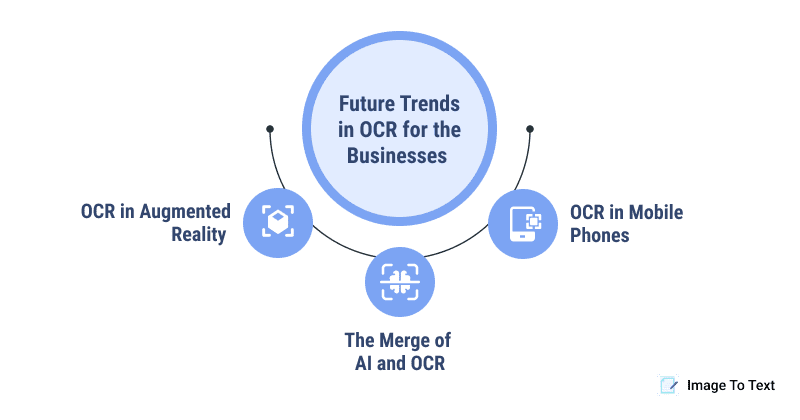
In this heading, we will discuss the things that can be expected to come as OCR advances. Some of these are already starting to be seen. However, they are still in their developmental stages. If you know these beforehand, you can make preparations to implement them as soon as they come out for tactical advantages.
1. The Merge of AI and OCR
Nowadays, a new name for OCR is being developed due to the integration of AI with it. It is called Intelligent Character Recognition. This is a technology that merges Machine Learning and Natural Language Processing with OCR.
This allows the OCR to understand the context behind the text that it is extracting. This reduces errors because the model will be able to predict a contested character. It will see what makes more sense and extract that character. The chances of error in this become enormously slim.
So, businesses that value data accuracy can utilize this up-and-coming feature of OCR to their advantage.
2. OCR in Mobile Phones
This trend is one of those that can be seen even now. With computer-based OCR systems, we first have to insert a pre-prepared image. However, with mobile phones that have built in cameras, this process can become much faster.
This is seen in the form of certain mobile applications available on both the App Store and Google Play Store. With these applications, you can simply take an image and it will translate the content present in that image.
3. OCR in Augmented Reality
Augmented Reality or AR is the technology that allows users to view images of certain objects in real life through a screen. The screen under discussion is usually a set of advanced glasses or headsets. This technology can be paired with OCR for various business benefits.
The most basic use case of this in businesses is that of a warehouse worker. With OCR-powered AR glasses, the worker can process text on various boxes, cartons, labels, etc. This can save him time that would otherwise be spent on information validation.
FAQs About OCR
Before we close this article, let us get into a few frequently asked questions about OCR.
1. What is an Invoice OCR?
Invoice OCR is a specialized form of OCR in which the tool recognizes not just the text in an image but also the pattern. This means invoice OCR tools can recognize the format of a document and process information accordingly. The said documents are invoices.
2. How do you use OCR on mobile phones?
The method for using OCR on phones is the same as it is for computer devices. However, an alternative method is to download an app for it as mentioned in one of the sections above.
3. Is Google OCR free?
Yes, Google has an application named Google Lens. This is usually built into Android phones. It allows users to access text inside images. It also has advanced features such as direct web search from image text and more.
4. Can OCR detect handwriting?
Yes, OCR can detect handwritten content as well. However, if the image is not clear or the text characters are unrecognizable, there might be a few errors in the final result.
5. What are good OCR tools?
You can find a variety of online OCR tools and also downloadable software. Here are some good ones in both categories:
- Adobe Acrobat DC
- Image to Text
- ABBYY Reader
- Google Lens
Conclusion
In conclusion, implementing OCR can revolutionize the way you process and manage data. As we explained, OCR’s ability to convert physical documents into digital copies alone has multiple benefits. On top of this, there are other advantages as well that we have discussed at various points in the article.
Mainly, OCR reduces errors in your functioning and drives productivity to levels you didn’t even think you could achieve. So, as the dependence on technology increases, the need for having an OCR system in your workflow will only grow. This will allow you to compete in this fast-paced digital world.
